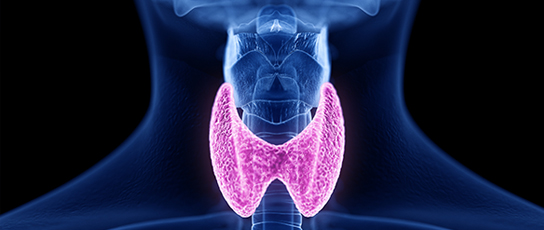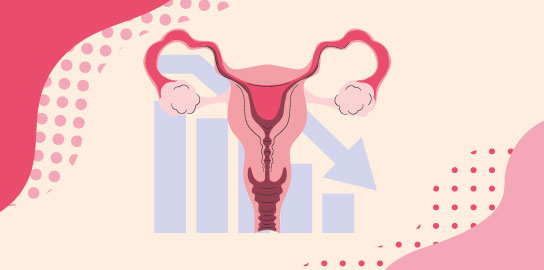The microbiota is the totality of microorganisms found in a flora. There is not one microbiota, but several microbiota: intestinal, oral (or buccal), vaginal, skin, stomach…
About 1013 symbiotic microorganisms forming the human microbiome are present on the surface of human epithelia, mainly in the digestive tract. These microorganisms include viruses, fungi, parasites and bacteria grouped into about 10,000 different species, including 500 to 1,000 for the digestive microbiota. In total, the number of bacterial genes in the digestive flora is 150 times higher than the number of human genes.
Although the intestinal microbiota is very rich, only a balanced distribution of bacterial species allows it to perform all its functions. This balance, where a favorable microbiota and a healthy host cohabit, defines eubiosis. But it stays fragile and many intrinsic (stress, infections…) and/or extrinsic factors (antibiotics, chemotherapy, changes in diet…) can disrupt it, leading to a state of dysbiosis.
In light of the numerous immune, endocrine or metabolic connections of the intestine and several organs, in particular the brain, alterations of the intestinal microbiota have been associated with various pathologies: chronic inflammatory bowel diseases (Crohn’s disease, hemorrhagic rectocolitis), irritable bowel syndrome, diabetes, obesity, colorectal cancer, allergies, cardiovascular diseases…
The interest of having characterized the intestinal microbiota and identified a dysbiosis is to better understand the potential links with these different pathologies and to be able to rebalance the microbiota, thanks to a modification of the diet, the intake of probiotics, or even a fecal transplantation (in a very precise context for the latter, recurrent C. difficile infections).
Definition, composition of the intestinal microbiota
Microbiota and microbiome
A microbiota (synonym: flora) is an ecological and taxonomic concept; it is defined by the totality of microorganisms (or species) living in a given place, identified by culture or molecular techniques.
The microbiome is a concept that has emerged from the development of high-throughput sequencing, which is therefore much broader. Strictly speaking, the microbiome of a given site corresponds to all the genes encoded by all the microorganisms found there. Thus, the study of the microbiome provides information not only on the species present, for example, in the digestive tract and which interact with their host, but also on all the genes and therefore the functions encoded by these genes. These functions play a major role in human health.
The most used approach to describe a microbiome is to first perform a PCR of the gene coding for 16S ribosomal RNA, specific to eubacteria, and then to sequence the resulting library of amplicons.
The intestinal microbiota: characteristics and composition
The intestinal microbiota represents more than 100,000 billion microorganisms, i.e. 10 times the number of human cells. These are mainly bacteria, but viruses and unicellular eukaryotes such as yeasts or protozoa are also present. Within the bacteria, about 1000 species are counted, divided into three subcategories:
– the dominant flora, composed of 90% of Firmicutes and Bacteriodetes:
– the sub-dominant flora, which might include pathogenic species whose proliferation is limited by the dominant flora;
– a passing flora, coming from the food.
Thus, each person has his own microbiota, which is relatively stable over time, although it evolves slightly with age.
Although no “healthy” profile has been defined, some data now appear to be well established, such as the importance of the richness of the intestinal flora and the diversification of bacterial species, as well as the negative impact of the proliferation of some bacteria contributing to the imbalance of the flora or dysbiosis.
Having a maximum diversity of bacterial species has a triple interest:
- to optimize the number of functions available to the host;
- to promote the resilience of the intestinal microbiota, i.e., its capacity to return to its basal state when subjected to “aggressions” such as an infection, antibiotic treatment or dietary changes;
- to prevent the overgrowth of a phylum and its takeover of the entire ecosystem, to the detriment of the host.
Functions of the intestinal microbiota
Although the composition of the intestinal microbiota varies from one individual to another, its functions remain generally similar.
Nutritional and metabolic role
The intestinal microbiota degrades undigested dietary fiber in the small intestine. It is involved in the metabolism of carbohydrates (degradation, fermentation), but also of proteins, lipids and gases. Moreover, it contributes to the production of bacterial metabolites, as well as fatty acids, phenols or vitamins (K, B12, B8…). Finally, it participates in the sensation of satiety.
Barrier function
One of the essential functions of the intestinal microbiota is its “barrier effect”, which prevents the proliferation of pathogenic bacteria. In a stable state, the balance of the different populations allows the maintenance of this protective effect which is exerted by several mechanisms and interactions with the different components of the intestinal epithelial barrier.
Role in immunity
The development of the gut microbiota takes place mainly during the first two years of life. This development is crucial for the maturation of the immune system at the local or systemic level, as well as for its regulation throughout life.
Indeed, the composition of the intestinal microbiota, established at an early stage, has a subsequent impact on the health of the host. Several studies have shown that specific strains, selected from a healthy gut microbiota, exhibit potent anti-inflammatory and anti-infectious effects through various mechanisms. This opens interesting perspectives for the treatment of diseases related to immune alterations.
Factors affecting the intestinal microbiota
About 20% of the composition of the intestinal microbiota is based on genetic factors and 80% on environmental factors. These factors are diet, including alcohol consumption, stress, lifestyle, hygiene, antibiotic use, the occurrence of bacterial infections, etc.
Diet
Dietary habits play an essential role in the modulation of the intestinal microbiota. A diet rich in fermentable carbohydrates helps to increase bacterial diversity. Conversely, a diet rich in meat induces a high level of bile secretion, which might select resistant species and contribute to a decrease in diversity. A change in diet, even over a short period of time, can affect the microbiota. However, these changes are reversible when the patient returns to a normal diet.
Antibiotics
Antibiotics can rapidly and significantly alter the composition and diversity of the intestinal microbiota. Generally reversible, at least partially, this alteration in the balance of the microbiota can lead to potentially more serious problems in young children.
Indeed, low diversity, even transient, in children aged 1 week to 4 months, is associated with various allergic manifestations during their development. For example, the incidence of asthma in 7 year old is correlated with low microbiota diversity before the age of 1 month. Hence the importance of microbial diversity in the first weeks of life, for the development of an efficient immune system.
Intestinal microbiota and digestive pathologies
A key role of the intestinal microbiota in Inflammaging
Inflammaging or low-grade inflammation associated with aging is a common denominator of many age-related diseases. Several recent data have shown the role of the intestinal microbiota in inflammaging, in particular via dysfunctions of the intestinal epithelial barrier.
Irritable bowel syndrome (IBS)
Numerous studies have been carried out. Some of them have shown, in subjects suffering from this syndrome, a lower diversity of the colonic microbiota and/or compositional profiles of the intestinal microbiota different from those of healthy subjects, with in particular a higher proportion of Firmicutes and a relatively lower quantity of Bacteroidetes. If other studies do not find these differences, the heterogeneity of the syndrome itself may explain it (constipated-diarrheal or mixed profile). In any case, the modification of certain bacterial populations, such as, for example the proliferation of sulfate-reducing bacteria, may be associated with digestive modifications at the origin of IBS manifestations.
Chronic inflammatory bowel disease (IBD)
The existence of dysbiosis has been well demonstrated in patients with Crohn’s disease, with a decrease in the presence of Firmicutes and an increase in Enterobacteriacae. Moreover, it has been established that changes in certain populations may influence the evolution of the disease.
Recurrent Clostridium difficile infections
In individuals with persistent and recurrent C. difficile infections, a decrease in the species diversity of the gut microbiota allows C. difficile to maintain itself. While appropriate antibiotic treatment may lead to resolution of symptoms, a new infection may occur following the treatment. In these situations of recurrent infection, fecal transplantation has proven to be effective.
Colorectal cancer
Alterations in the intestinal microbiota have been associated with an increased risk of colonic adenocarcinoma in patients with Crohn’s disease and more generally in those with IBD. In particular, a greater proportion of bacteria of the genus Fusobacterium and a reduction of Firmicutes and Bacteroidetes were observed in tumor areas compared to samples from individuals who did not develop a tumor syndrome. These effects seem to be related to a greater inflammatory activity.
Analysis of intestinal microbiota: benefits and methods
The purpose of characterizing the intestinal microbiota is to obtain an overview of the balance of the intestinal flora and to identify any dysbiosis, in order to better understand the links with various symptoms or pathologies, and to be able to rebalance the microbiota by modifying the diet or taking probiotics.
The test is open to both men and women, with no age limit. In children, it is not advisable to carry out the analysis before the age of 3, when the microbiota stabilizes towards an adult profile.
Microbiota analysis is based on the sequencing of a ubiquitous gene (16S), enabling the simultaneous identification of the majority of bacteria present in the intestine from a stool sample. The results of this sequencing are then analyzed using a bioinformatics “algorithm” and transcribed into a report, to understand the impact of these populations on health.
Modulating the microbiota, in particular by adjusting diet, appears to be an interesting way of preventing the onset of disease and promoting healthy ageing.


